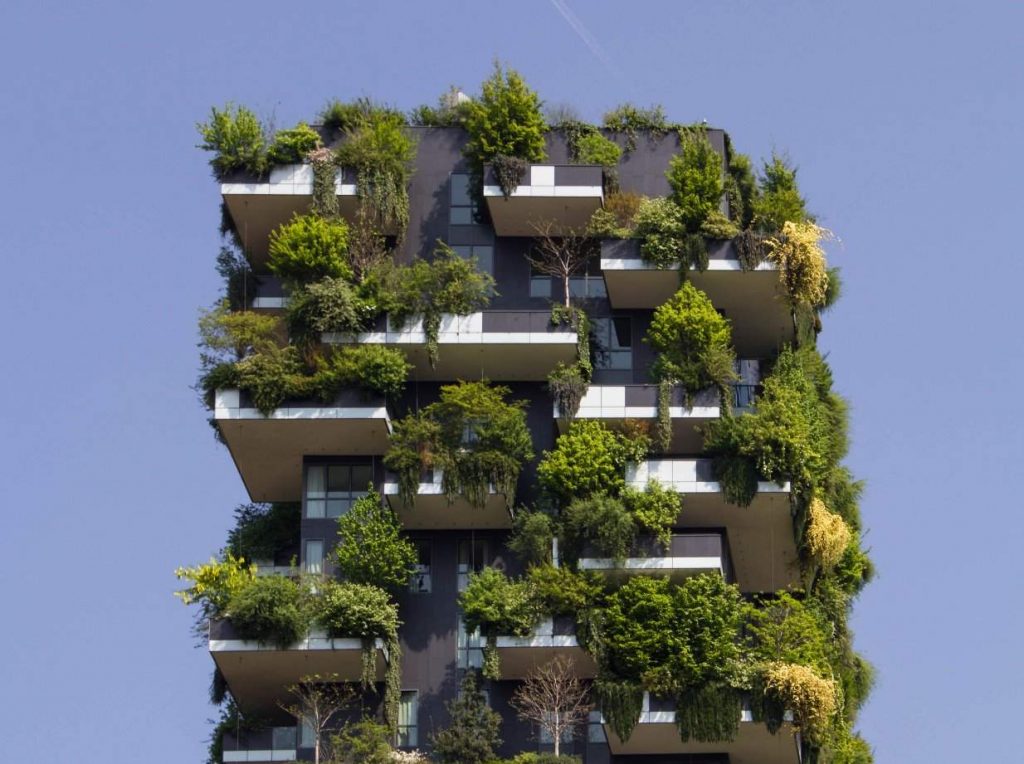
What Is Sustainable Living?
It would be an understatement to say we talk a lot about sustainable living here on Sustainable Jungle.
But what does that phrase actually mean?
Sustainable living is a practical philosophy that aims to reduce personal and societal environmental impact by making positive changes which counteract climate change and other negative environmental concerns.
More simply, sustainable living is a method of reducing one’s “carbon footprint”. If you need motivation to jump on board, try out the World Wildlife Fund’s environmental footprint calculator.
“Sustainable living” encourages people to minimize their use of Earth’s resources and reduce the damage of human and environmental interactions.
Let’s first look at the more complex ethos behind sustainable living, before moving on to the practical side of sustainable living and how you can start.
THE GOAL OF SUSTAINABLE LIVING
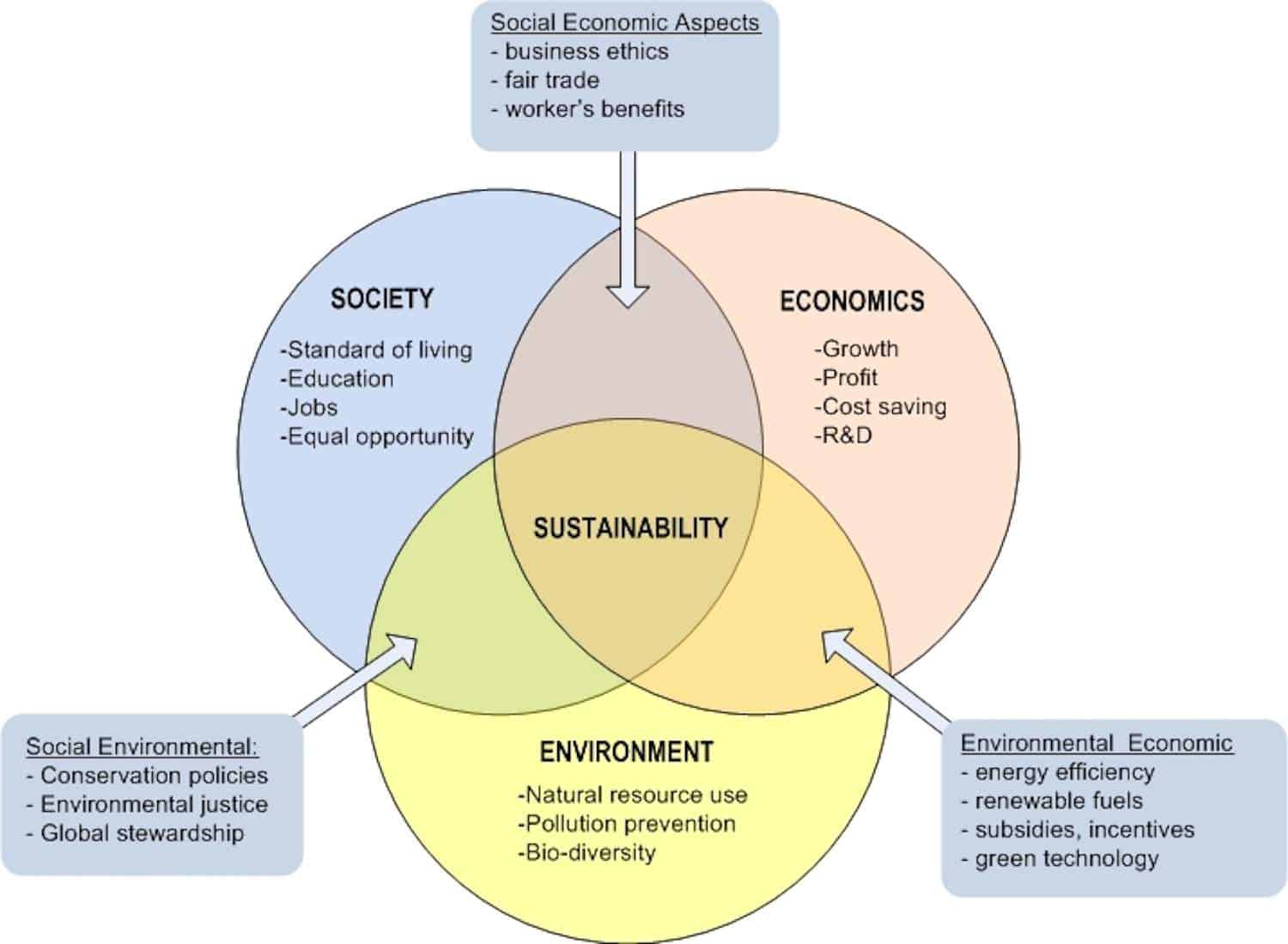
In more complex terms, sustainable living aims to achieve an environmental equilibrium. This is sometimes called “net zero living” or striking a “zero energy balance” with the Earth.
In other words, return to the earth whatever you take from it.
Obviously, this is sustainability in its ideal form.
None of us will ever be able to truly achieve zero environmental impact. Which is why sustainability in its most broad sense also refers to how achievable that end is.
This is somewhat explained by the three pillars of sustainability illustrated by the venn diagram above from Penn State University. On the outside, we have the big three components: environmental, social, and economic.
All three are connected by their subcircles and converging in the center of it all is true sustainability.
We can’t have one without the others.
While environmental sustainability is first and foremost what we’re discussing, it’s important to bear in mind that without the economic and societal means it is vulnerable to collapse.
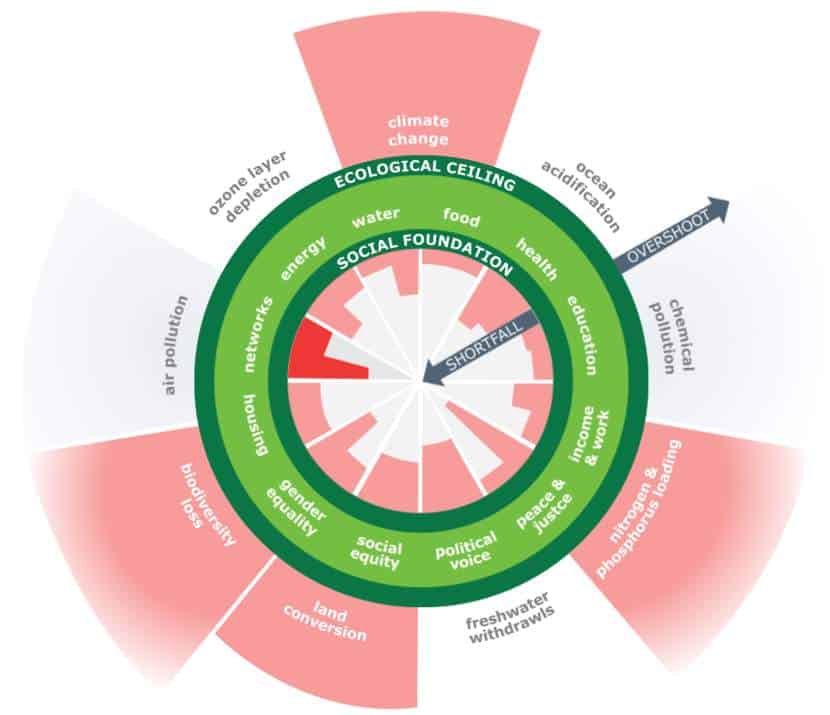
Another super interesting way of thinking about sustainable living is using the concept of Doughnut Economics, developed by visionary thinker and Economist, Kate Raworth.
This concept uses big picture thinking to help redefine how our global and local systems can operate such that we live within our means as humanity (i.e. sustainably).
As she puts it on her website:
“Humanity’s 21st century challenge is to meet the needs of all within the means of the planet. In other words, to ensure that no one falls short on life’s essentials (from food and housing to healthcare and political voice), while ensuring that collectively we do not overshoot our pressure on Earth’s life-supporting systems, on which we fundamentally depend – such as a stable climate, fertile soils, and a protective ozone layer.
The Doughnut of social and planetary boundaries is a playfully serious approach to framing that challenge, and it acts as a compass for human progress this century.”
Having now seen multiple documentaries where Kate explains this concept, we think doughnut economics is best explained with a video:
A wonderful concept, and our governments and the private sector should be taking these new ways of thinking very seriously. But as individuals what can we actually do now to live more sustainably.
Let’s look more closely at this.
WHAT DOES SUSTAINABLE LIVING LOOK LIKE?

Reducing our impact on the planet: sounds simple enough… right?
There is no perfect picture of “sustainability”. It’s very much a personal interpretation. There are however lots of different strategies, actions and lifestyle tweaks that together make up a much more sustainable way of living.
But while no one can be perfectly sustainable, the sky’s the limit for how far along the sustainable spectrum you can go. Here are some of the most impactful and practical sustainable living components:
Use your voice:
Much of what we talk about at Sustainable Jungle is about using your voice, either directly through raising awareness and standing up for change or indirectly through making sure what you spend your money on really counts.
So as a precursor to the rest of this section, the most important thing you can do is to vote for those challenging the status quo, making positive environmental and social change; demand better from our leaders in power and vote with your dollar by supporting those that are making a difference.
Renewable Energy:
Sustainable living says “no” to fossil fuels (and not just because we’re running out of them). Their extraction not only destroys the planet, but they burn dirty, releasing tons of CO2 emissions.
Renewable energy on the other hand includes energy derived from unlimited sources (i.e. sun, wind, water, geothermal, and biomass) that are clean to use and much less impactful to source.
The benefits of renewable energy, both environmentally and economically, make it one of the biggest sustainable living solutions.
Action: The most impactful action here is to research renewable energy providers in your country/city and make the switch for your home energy. Also, if you can encourage your workplace to do the same. A great example of a renewable energy provider is the UK’s Bulb Energy – we interviewed the founder on our podcast.
Organic and Regenerative Farming:
To a large extent, organic food is grown without the use of chemical pesticides and herbicides. It’s not only better for you but MUCH better for the environment.
In fact, inorganic farming is one of the leading causes of biodiversity loss (which, by the way, is one of three planetary boundaries considered over the level of safe human/environmental interaction).
That’s because agricultural chemicals are killing insects. And over 40% of the world’s insect species are declining, which will only lead to a food chain catastrophe.
What is regenerative agriculture though?
It’s a method of organic farming that restores carbon and health to the soil is an incredibly exciting movement that could both draw down carbon from the atmosphere while improving productivity.
Project Drawdown lists Regenerative Agriculture as the 11th most impactful solution for drawing down carbon (and ultimately reversing climate change).
Action: We as the consumer can choose to purchase from farmers that use organic and regenerative methods. You can often find these types of farmers at local farmers markets and many now have online stores. The more of us that are priviledged enough to afford the extra cost, the more these methods will become viable and more affordable.
Plant-rich diets:
Farming methods aside, adopting a plant rich diet is an incredibly impactful way to live more sustainably.
According to Project Drawdown:
“Plant-rich diets reduce emissions and also tend to be healthier, leading to lower rates of chronic disease. According to a 2016 study, business-as-usual emissions could be reduced by as much as 70 percent through adopting a vegan diet and 63 percent for a vegetarian diet, which includes cheese, milk, and eggs. $1 trillion in annual health-care costs and lost productivity would be saved.”
In fact, the meat and dairy industry takes up 83% of all farmland and is responsible for 60% of the agricultural industry’s 13.7 billion tons of yearly greenhouse gas emissions.
The Vegan Calculator suggests that adopting a plant-based diet can save 401,500 gallons of water, 10,950 square feet of forest, 7,300 pounds of CO2 emissions per person per year (not to mention the 365 animal lives saved).
Numerous studies, such as the Natural Resources Defense Council’s report “Less Beef, Less Carbon”, all echo the same truth: meat, at least the way it is farmed today, is unsustainable (not to mention inhumane).
Action: Switch to a plant-rich diet! Note that, for many the thought of switching to an entirely vegan diet doesn’t sit well, and for some, other health concerns can get in the way. If this is you, consider simply eating less meat. Again, every bit counts and if everyone adopted Meatless Mondays, weekday veganism/vegetarianism, or a flexitarian diet, the impact would certainly not be insignificant.
Grow your own food:

Anyone who has grown their own tomato knows the satisfaction of making something from just about nothing and the taste is oh so good!
Growing your own food using organic methods not only greens urban spaces but also sequesters carbon, make cities greener, increases biodiversity and reduces food travel miles.
In that vein, we’ve seen a recent surge of urban farming efforts, either through a community garden or private apartment garden. This keeps food grown locally, organically, and without excess: the trifecta of sustainable food.
Action: If you’re new to gardening, try follow a few ecological gardening tips to get started!
Food Waste:
Food waste is the most ridiculous problem facing humanity and should be so easily solved.
Project Drawdown lists food waste as the #3 most impactful solution to reducing carbon. Food is currently wasted all the way along the supply chain and it is extemely destructive in landfill, making up 8% of all emissions.
Action: As a consumer, we can massively reduce food waste in the home with better planning, preserving and freezing food, finding creative ways of using food scraps, composting and growing your own food. Additional, buying products from the supermarket that are close to expiry helps prevent them from going straight to landfill
Reducing Individual Modes of Transportation:
Sustainable living seeks to replace gas-guzzling, high horsepower vehicles with fuel-efficient, hybrid, or electric cars. It also encourages people to drive less, whether through human-powered modes of commute (e.g. cycling which has a host of other benefits too) or public transportation.
Sustainable Building Models:
Rather than using synthetic materials like vinyl and PVC (the WORST of all plastics according to this video by Safe Water Advocacy Alliance), sustainable living focuses on organic and biodegradable materials like adobe, untreated wood, bamboo (like Tencel), recycled metal, straw, and reclaimed brick.
Combined with green building designs, this makes for the literal building blocks of future sustainable structures.
Self Sufficiency:
There is a spectrum when it comes to self sufficiency and some folks are well advanced!
At its top tier, sustainable living takes us off-grid, referring to a decentralized self-sustaining home independent of fossil fuels or mainstream non-renewable energy sources.
Off-grid homes utilize not only renewable energy, but make use of naturally collected rainwater, composting toilets, and wood burning heat. Oh and they grow their own organic produce, too.
Not to mention keeping produce fresh and preserving food to reduce food waste.
SUSTAINABLE LIVING VS. ZERO WASTE LIVING

The terms sustainable living and zero waste living are often used interchangeably. It’s easy to see why, because the two lifestyles are driven by the same goal – to preserve the planet.
Even in practice, there’s plenty of overlap.
For example, reducing plastic is always good for the environment, so zero waste practices are inherently also sustainable living ones, too. On the flip side, those aiming for a zero waste lifestyle also tend to adopt other sustainable living habits.
While driven by the same underlying motivation, zero waste and sustainable living prioritize lifestyle changes differently.
Zero waste focuses on the trash problem (at the consumer level) and the closed-loop cycle of production and consumption (at the systematic level). It doesn’t specifically address things like transportation or green superannuation/pension funds to invest in.
Those things are domains of sustainable living, a much broader concept that deals with ways to reduce the environmental impact of large scale day-to-day activities that don’t necessarily produce quantifiable or physical forms of waste.
Let’s look at a few examples:
- Food: Zero waste living strives to reduce food packaging whereas sustainable living aims to reduce the impact of the food system as a whole. It does this by striving for organic, plant-based items. Zero waste is less concerned with where the produce came from and whether it was grown organically, and more with whether or not there’s a non-biodegradable PLU sticker on it.
- Travel: Sustainable travel and tourism mean choosing to support local economies over international chains and choosing not to support attractions responsible for animal rights abuses. Zero waste travel however teaches us to to do things like use reusable bottles over plastic ones especially in foreign countries that lack recycling or waste management systems.
You can also think of them in terms of the habit changes they promote.
Zero waste living includes the habit of having a zero waste kit (e.g. reusable bag, having reusable food and drink containers) at the ready and looking out for products with compostable or reusable packaging.
Sustainable living habits would be taking public transport or cycling to work, composting, adopting a plant-rich diet, buying locally and seeking out responsible brands that manufacture with sustainability in mind.
Here’s a list of the best brands we’ve found in each of these categories (and we’ll continue adding to this as we do more research):
While the zero waste movement is a bit more narrow in focus, it’s been a huge boost to the sustainable living movement because it provides actionable and easy-to-implement steps toward sustainability. Which can often feel overwhelming.
For example, one can easily find simple, comprehensive resources on everything zero waste. Overtime, we’ve covered most aspects of the home from a zero waste perspective, for example:
And many of these items can now be easily found at a zero waste online store.
Ultimately, it’s easier to reduce waste we can see. Refusing plastic straws is a much more simple fix than making the switch to renewable energy sources.
While it’s great that zero waste is encouraging and empowering people to cut back on plastic (which we all need to do!), sustainable living is the larger solution our planet so desperately needs.
WHY EVERYONE SHOULD TRY TO LIVE MORE SUSTAINABLY
Sustainability and zero waste may be trending, but sustainable living (and even sustainability for kids) must become the status quo.
It’s a necessary lifestyle ethos that should become the default if we want to preserve the planet for future generations.
Not only is the natural beauty of the planet quickly disappearing so that our grandchildren may never experience the awe that comes from overlooking a glacier, but we’re making on our way to making it darn near unlivable.
Climate change is happening. Resource depletion and biodiversity loss is happening. And we’re not just running out of unnecessary fossil fuels, but out of things like fresh water, which every single person and lifeform on the planet needs to survive.
The term itself denotes its own importance. Sustainable living: a means of sustaining life on this planet.
Even more than protecting it for our own self-preservation (a still inherently selfish motivation), we have a duty to protect our one and only planet…because the chances of finding another are probably at this stage more sci-fi than anything.
The sheer existence of Earth is a statistical improbability, and the future of this infinitesimally rare planet depends very much on how we humans (a mere blip on the planet’s timeline) behave.
Earth is precious and it’s time we start acting like stewards (even if we have to follow a sustainability app), as individuals, businesses, industries, and entire communities.
This is exactly what sustainable living encourages us to do.
WHAT ELSE CAN WE DO TO START LIVING MORE SUSTAINABLY

If you’re reading this article and asking the question, “How can I start living sustainably?” you’ve already made a huge step in the right direction.
We already covered some key actions you can take above but here are some more ideas!
From here, take baby steps. Rather than setting your sights immediately on profound world-shattering changes, focus on what you can do TODAY to reduce your impact. Then think about what you can do tomorrow and keep going from there.
No one expects you to start living off-grid immediately (or ever, really, because that’s just not realistic for most people!).
The first thing we suggest you do is get inspired by all the amazing sustainable living and zero waste bloggers out there.
Next, familiarize yourself with the 5 R’s of zero waste. In the context of zero waste, they apply to product consumption and disposal.
However, they’re also essentially a low impact strategy that certainly overlaps with the ethos of sustainable living.
- Refuse what you do not need
- Reduce what you do need
- Reuse by repurposing stuff and choosing reusable over disposable
- Recycle what you cannot refuse, reduce or reuse
- Rot (compost) the rest
There are so many changes you can make.
Here are even more ways to get started:
- Ditch driving once in a while. Changing your mode of transportation to something more eco-friendly, like walking to biking, saves a ton of car emissions from pouring into the atmosphere (plus it’ll save you money at the gas pump). If your commute is too long for human-powered transportation, opt for public transport or try carpool.
- Be conscious of water use. There are tons of effortless ways you can cut back on water consumption. Reduce the number of times you flush the toilet (if it’s yellow, let it mellow!) Wear your clothes until they’re actually dirty so you can do laundry less. Stop letting the water run while you brush your teeth. Cut back on those therapeutic hour showers. Water your lawn less often.
- Start composting! People send a ridiculous amount of food waste to the landfill each year. In America alone, people threw away 40.7 million tons in 2017, according to EPA estimates. That number is even more shocking when you consider most food is among the huge list of things that are compostable. So rather than send them to the landfill where they’ll decompose anaerobically and produce methane gas (the most powerful of the greenhouse gases), turn your food waste into something beneficial for the planet. Space is no excuse: you can even compost in your own apartment. And at the least opt for compostable and biodegradable trash bags.
- Offset your travel emissions. Truly sustainable travel is hard, but one thing you can do to reduce the impact of those giant airplanes is by purchasing offsets from one of the best carbon offsets providers. No need to cancel your family vacay, but consider taking your unnecessarily consumerist souvenir budget and just applying that to offsetting instead.
- Consume less stuff more thoughtfully. While not entirely necessary to be taken to extremes, being more minimalist can help achieve a more sustainable life. Buying less is less wasteful for the consumer and promotes less waste and industry emissions by the manufacturer. Adopt a “need over want” mindset. If you do need something, buy second hand first! Go thrifting, hit up garage sales, or scour Facebook marketplace. Focus on sustainable fashion (like opting for online thrift stores or clothing rental online) and ethical jewelry, for example.
- Shop local rather than ordering online or buying from big box stores. Consider how far something must be shipped before you support it. By buying locally, you’re not only supporting your local economy and smaller businesses, but you’re casting a vote against a world practically choking on shipping emissions. If you do buy online, support ethical online stores.
- Invest in sustainable, positive impact companies: We recently interviewed Future Super on our Podcast, an Australian Superannuation fund (very similar to a pension fund). They will invest (on your behalf) only in companies that don’t contribute to negative social and environmental outcomes (but practice carbon insetting for example). They explained that if just 7% of Australia’s population switched to an ethical fund manager, we could finance the entire switch to renewable energy.
We recommend investigating where your pension is invested and if you’re fortunate enough to be able to invest more, consider socially responsible banks and ethical investing apps to get the best ROI (for you and the planet).
“Money for Good” is extremely powerful.
FINAL THOUGHTS ON “WHAT IS SUSTAINABLE LIVING?”
The state of the environment is pretty grim, and it’s led to a fatalistic counterargument against sustainable living: we’re already so deep, what can one person really do to turn the tide?
For starters, recognize that one becomes many, and many have the power to drive real change on a legal and political scale. In turn, all will be held accountable – even those oil and coal lobbyists.
As individuals, we may feel small, but collectively we can have a huge impact.
Every single person should embrace the ways we can change our own behavior to benefit the earth, no matter how simple it may seem.
Just like the movement takes one person, sustainable living can start small, too. The little changes you make today mean a lot for tomorrow, and from there the sky’s the limit.
Something you can do right now is to check out these inspiring sustainability blogs and to share this article. Spread the word about the importance of sustainable living.
Even if just one person reads it and decides to don their sustainable bike shorts and cycle to work tomorrow instead, you’ve made an impact.
You’ve started living more sustainably.
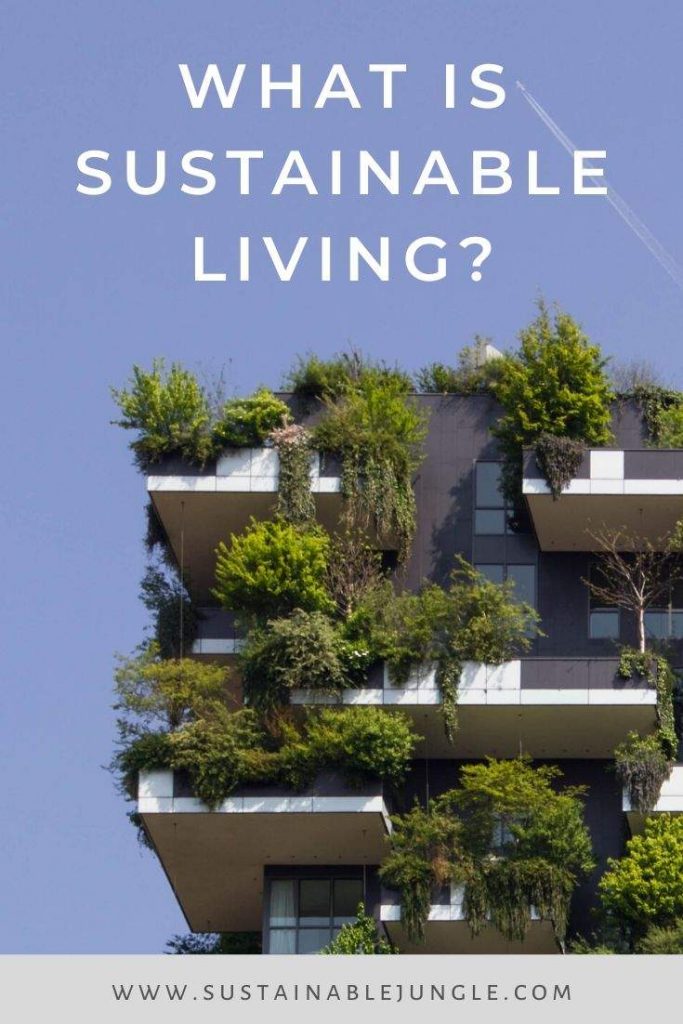

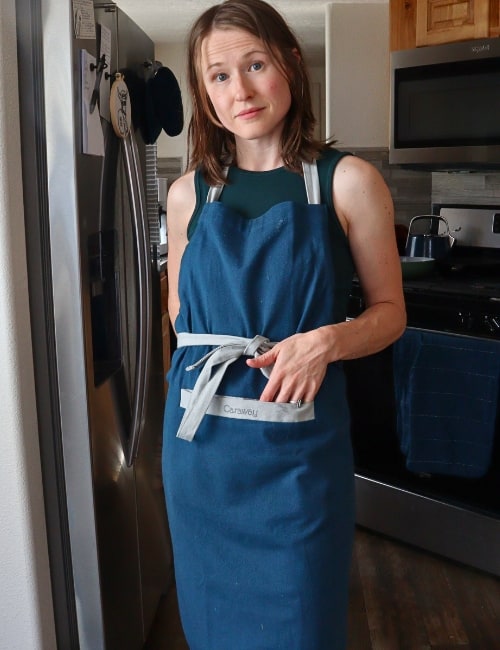
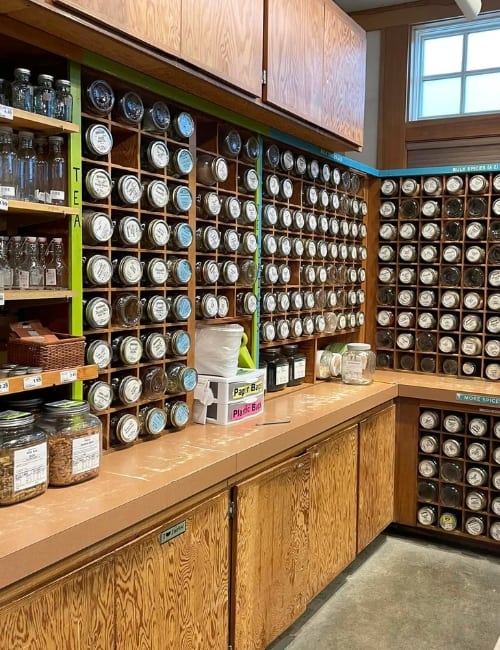
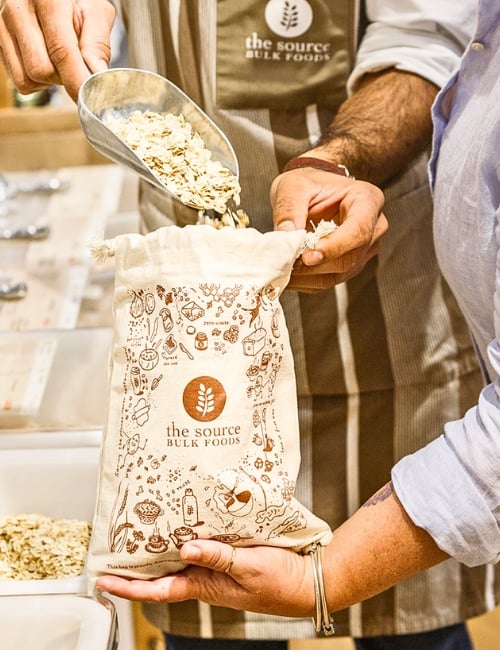
Great Article.
Recently I found Climesumer.com. It has a huge list of sustainable alternatives and shows ways to take effective climate action.
I love reading your articles. You spread every knowledge about every topic and the best part is you have updated everything for us timely. I know a Zero Waste Store in Australia that has very good products go and check the website.
I love reading your blog and thank you for this eye-opening and helpful article! I wanted to add that people can live more sustainably by giving away their cardboard boxes and packaging supplies on BoxGiver. I hope that helps!
Hi guys,
Epic article! And so excellently crafted!
I have an article on the 5rs on my own humble website, which gets a bits of traffic even though it’s in dire need of a rewrite. I’d love to a send a few extra readers your way to show my appreciation for how inspirational I have found you, so I’ll make sure to link to this when I get around to it 🙂
Stay safe!!!
Thanks Brett!
Very informative post! The 5 r’s are a great way to apply sustainable living practices. I catch myself everyday looking to make poor decisions on purchases or decisions that will not satisfy proper living in conjunction with living a more sustainable lifestyle. Be aware of your actions and question ourselves and we will begin to do a better job!
Thanks for the information!